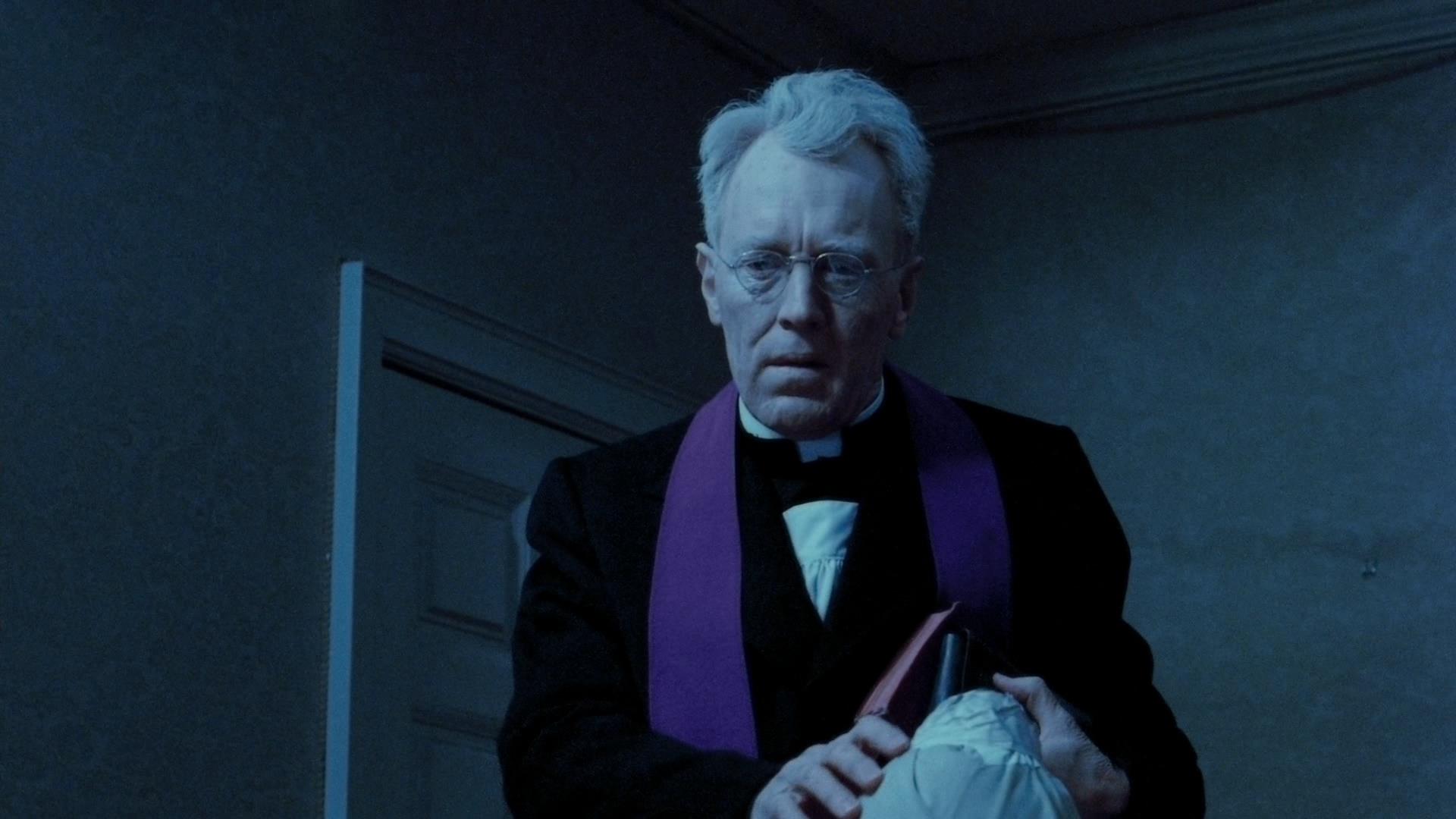We begin our second installment of our recommended
filmography (read the first here) with the movie that DID make Swedish/French actor Max von Sydow a
star in the United States. The only problem was, it made him a star in a role
in which he played a man about the actual age he is today (which is 86). Read
on…
“The Exorcist” (1973)
“I’ve never worked with an actor more dedicated,” director William
Friedkin wrote of von Sydow. In his mid-forties when called upon by Friedkin to
play Father Merrin, the title exorcist (Friedkin had nixed the idea of Marlon
Brando for the part), von Sydow underwent hours of makeup and changed his
upright physical posture to play the over-70-year-old priest. A performance of
amazing, quiet authority, von Sydow reprised the role in John Boorman’s
much-maligned 1977 “Exorcist II,” and, because his scenes flashed back to a
demon origin story, he played the character as much closer to his own real age!
“Three Days of the Condor” (1975)
Throughout the ‘50s and ‘60s, von Sydow played
often-internally tortured men of integrity. But his regal bearing, upright
posture, and air of erudition if not craftiness appealed to American directors
who wanted slippery Euro-villains. Sydney Pollack employed von Sydow to great
effect as one such fellow, a very slick assassin who actually commits the
murders that CIA research schnook Robert Redford is supposed to take the rap
for.

“The Desert of the Tartars” (1976)
One of the most unusual of the male-cast-dominated military
thrillers of the ‘60s and ‘70s, this is a great Euro-ensemble piece in which
von Sydow, as a haunted captain, really shines alongside the likes of Francisco
Rabal, Vittorio Gassman, Fernando Rey, Jean-Louis Trintignant, and others.
These men are all in a crumbling desert outpost (the picture was shot in an old
fort in Iran), awaiting the attack of the enemy. Many years ago, von Sydow’s
captain saw the light of their swords approaching, and since then…nothing. A
truly peculiar and engrossing waiting-for-the-end-of-the-world movie.
“March Or Die” (1977)
Another dude-centric military film, this one focusing
on French Foreign Legion in the 1920s,
only the filmmakers throw in Catherine Deneuve for some relief from the
testosterone. Von Sydow plays support to the odd leading pair of Gene Hackman
and spaghetti western stalwart Terrence Hill. While Hackman and Hill’s
characters, among others, do all the grunt work, von Sydow plays the rather
effete French archaeologist they’re assigned to protect in Morocco. Things start
to get real when the prior group of diggers is revealed to have had their eyes
and tongues cut out. A favorite of Quentin Tarantino’s. Of course.

“Flash Gordon” (1980)
The debut of Max “Paycheck” von Sydow? Some might say his
delectably hammy turn as space tyrant Ming The Merciless in this campy Dino De
Laurentiis production was a cash in, but maybe it’s just the first part of an
outrageous Super Villain trilogy. In any event, he looked a sight in his makeup
and costume, and brought a very stentorian relish to pronouncing each
particular syllable of his ridiculous dialogue.
“Never Say Never Again” (1983)
Yes, this rights-to-“Thunderball”-driven attempt at a Bond
film starring Sean Connery but not produced by the Eon team was a misfire on
any number of levels. But it did give our favorite new “Game of Thrones” cast
member an opportunity any actor would jump at: the chance to play arch-bad guy
Ernest Stavro Blofeld. Tall, lean von Sydow’s take on the part was a marked
contrast to short, plump, Donald Pleasance’s. One of the standout features of
an unfortunate novelty picture.
“Strange Brew” (1983)
“It takes experience to run a brewery…and you have NONE!” von
Sydow concludes his Super Villain trilogy playing the arrogant, murderous
Brewmeister Smith in this absurdist comedy, starring Dave Thomas and Rick
Moranis as definitively dim Canadian “hosers” Doug and Bob MacKenzie. Their
greed for beer leads them into a “Hamlet”-derived plot of usurpery, which they
manage to squelch in spite of their idiocy. Von Sydow plays his part almost
utterly straight, which makes his incomprehension of his idiot foes that much
funnier. A movie that deserves more than its cult status.

“Hannah And Her Sisters” (1986)
Ingmar Bergman admirer (some might even say idolator!) Woody
Allen tapped onetime Bergman main man von Sydow for his warm, ensemble driven
comedy drama. He plays arrogant, didactic, practically loft-bound artist Frederick,
so confident that he’s got beautiful Lee (Barbara Hershey) under his spell that
he can’t notice her discontent. Setting the stage for Lee’s brother-in-law
Elliott (Michael Caine) to make his move. It’s complicated, and the heart wants
what it wants, and so on. Another excellent example on how von Sydow can make
his formidable presence subordinate to the larger cast when he has to.
“Pelle The Conqueror” (1987)
Hard to believe this amazing actor did not receive his first
Academy Award nomination until this film. Here he plays Lasse, the father of
the young title character, an aging drunk whose migration story from Sweden to
Denmark is a lot tougher than any American might expect such a commute would
be. von Sydow’s second nomination was for supporting actor in 2011’s “Extremely
Loud And Incredibly Close”—an exemplary, which is to say, for von Sydow,
typical—performance in a lamentable film.
“Shutter Island” (2010)
In the 90s and the ‘00s, von Sydow has played scads of dads,
granddads, and father-grandfather figures of other stripes as well. His first
and so far only teaming with director Martin Scorsese has him playing a mad
doctor of the most menacing sort, brandishing a looooong needle as he intones
at Leonardo Di Caprio. A cameo, yes, but a very memorable one.












